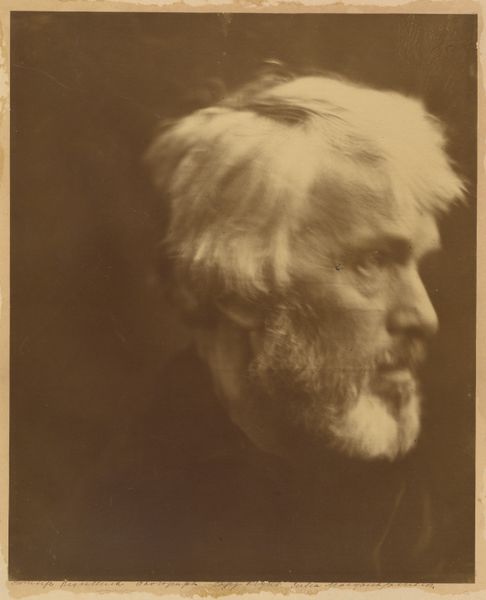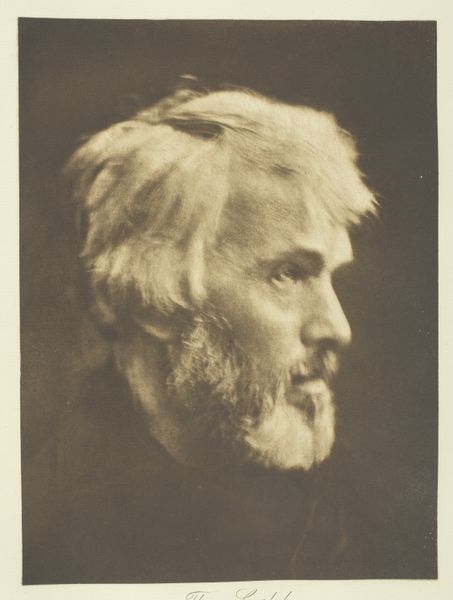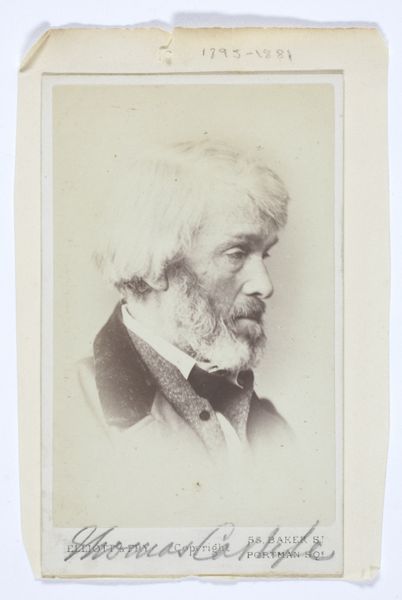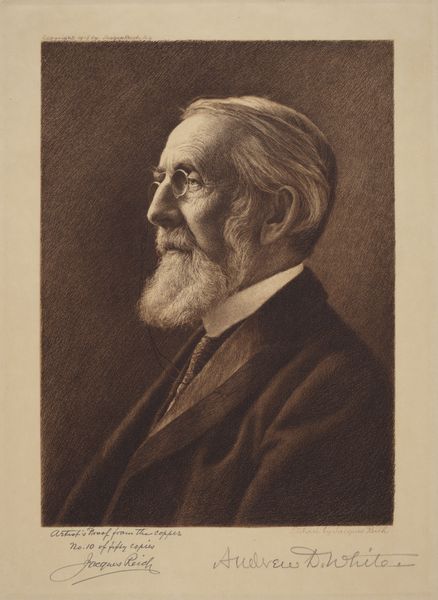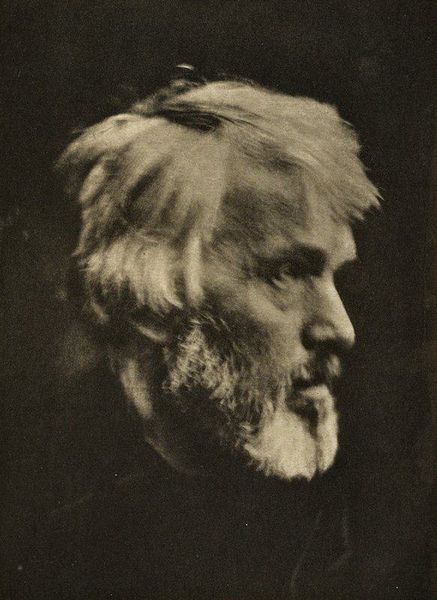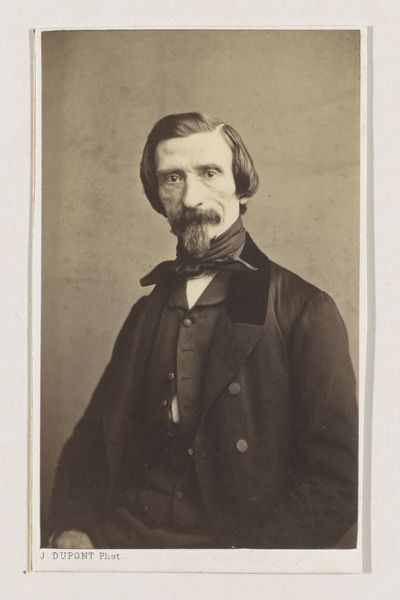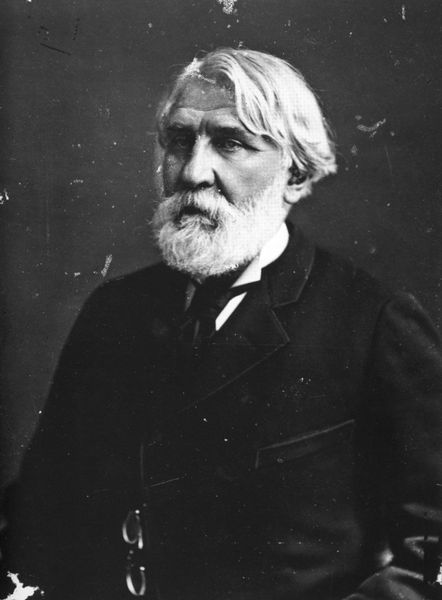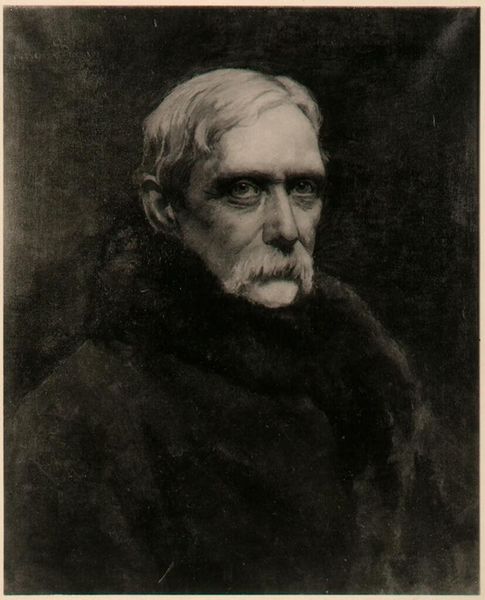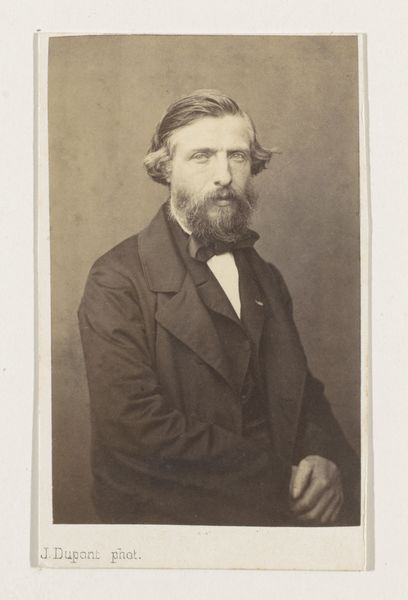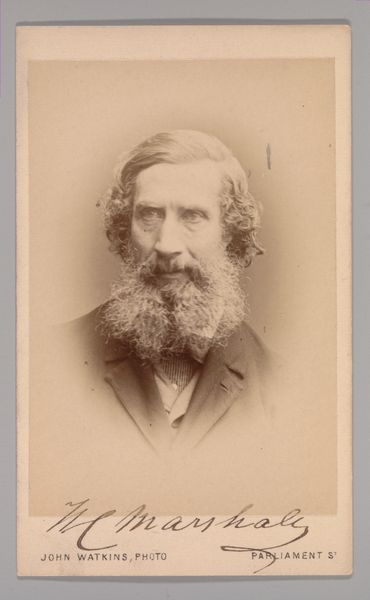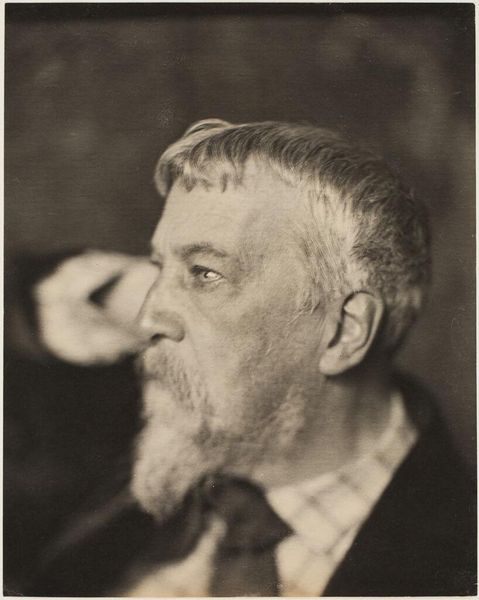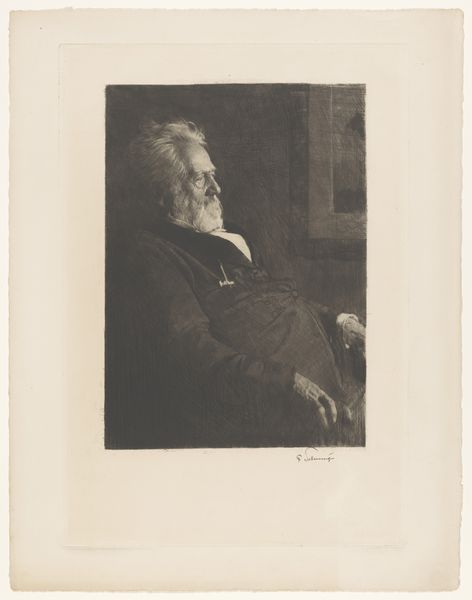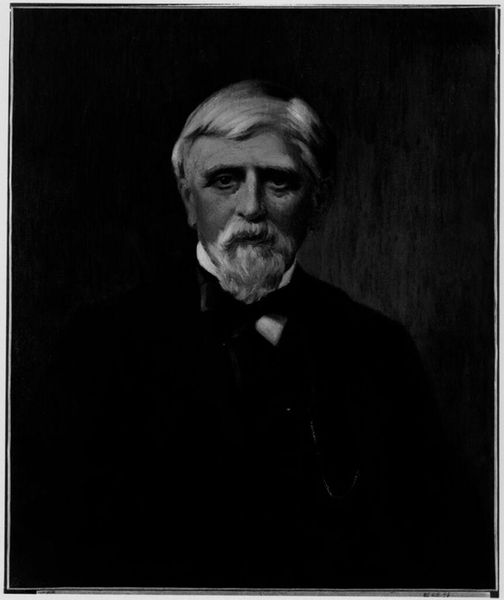
Dimensions: 35.0 x 28.1 cm. (13 3/4 x 11 1/16 in.)
Copyright: Public Domain
Curator: Before us we have Julia Margaret Cameron’s 1867 gelatin silver print, a portrait of Thomas Carlyle, here at the Metropolitan Museum. Editor: The overwhelming effect is shadow—deep, pervasive shadow. The subject seems to emerge from, or perhaps retreat into, darkness itself. The high contrast emphasizes texture on his face and clothing, but the lack of focus seems like a flaw in processing rather than aesthetic effect. Curator: But this focus, or perceived lack thereof, is crucial to understanding Cameron’s practice. The very tangible materiality of her process--the glass plates, the darkroom, the solutions--led to unpredictability, an embracing of "imperfection" as a pathway to truth. This romanticist blurring eschews detail to capture the essence of Carlyle, perhaps better known as an essayist, historian and philosopher. Editor: I agree the blurred effect certainly departs from earlier portraiture which was so highly polished. Considering how labor intensive 19th century photography was, with long exposure times, I wonder how cooperative the subject, Thomas Carlyle, was during the sittings to achieve this softness in production. I wonder if he even realized his visage might be so manipulated by Cameron. Curator: The resulting work has strong echoes of the Old Masters: think of Rembrandt's manipulation of light and dark to convey inner states. She has intentionally created what appears to be a simple visual experience, a singular emphasis on Carlyle's expressive eyes to communicate a profound psychological truth. The composition itself becomes a lens through which we perceive the very concept of authorship and intellectual genius. Editor: Still, looking closely at this print, you can observe tiny blemishes, the fingerprints of its making, perhaps the casual attitude of the photographer herself. Its aura lies less in capturing likeness than in the physical manipulation inherent in the labor that brings the image to its fruition, it shows how a portrait sitting should involve a lot of negotiation on behalf of both sides of the camera. Curator: Indeed. Through its imperfections and calculated compositions, it unveils the intangible elements that shaped the sitter. Editor: And through that careful manipulation, illuminates the complex, negotiated and materially intensive process that informs the making of this piece.
Comments
No comments
Be the first to comment and join the conversation on the ultimate creative platform.
